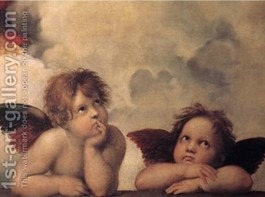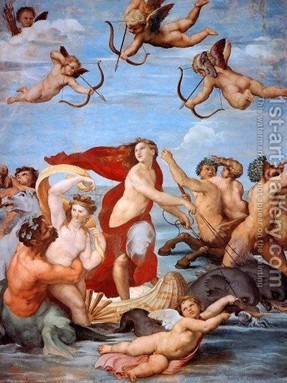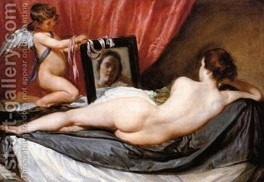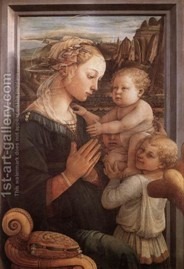The reign of the Renaissance was an age of rebirth which brought to the limelight many immortal artworks. It was an awakening time for the world, especially for artists who detached themselves from the Church and illustrated things with a novel viewpoint.
Even post this divorce, religious and mythological imagery persisted in artworks, especially that which encompassed angels. Angels are the assistants of God and have made an appearance in the Original Sin as well as celebrations including trumpets and pomp.
The Renaissance artists particularly liked to include cherubic baby angels as a part of their masterpiece to denote the changing times. So, let us hold on to the wings of these baby angels and take a tour of ethereal and religious artworks of Renaissance that feature them.
Cherubini by Raphael
Raphael was one of the masters whose names are still synonymous with the Renaissance along with Leonardo Da Vinci. His camaraderie with Da Vinci made him a well-rounded artist whose appreciation for the greatness of humans mirrored in his work greatly.
This glorious painting was requested by Pope Julius in honor of his uncle who deemed it to be extraordinary. The baby angels featured in this artwork latched on to their own fame and name. Raphael found a muse in two children on the street who were gawking wishfully inside a baker’s shop.
Raphael found their innocence and their pose striking which is why he decided to turn them into angelic creatures in this masterpiece. His mastery is crystal clear as he successfully fabricates a mystical environment of swimming above the cloud with this painting.
The Triumph of Galatea by Raphael
The Italian master hand, Raphael was an extraterrestrial force during the Renaissance whose vigor and creativity still stands unmatched. This breathtaking masterpiece featuring an excerpt from Greek mythology was commissioned by Agostini Chigi to be plastered as a panel to adorn the Villa Farnesia.
This is originally a fresco that depicts a scene from the life of Nereid and also displays the imponent Galatea who is mounted on a chariot, pushed by dolphins. The inspiration for this fresco was the Stanze per la Giostra which unearths a plot by the Cupids to make women fall in love with nymphs.
We can observe the very vivacious tints which makes the painting more striking and appealing. Here, a very familiar style of painting can be seen emblazoned on a vivid color palette, similar to that of the Romanesque paintings of Michelangelo.
A Venus in her Mirror by Diego Rodriguez De Silva Y Velazquez
Diego rose to fame during the Spanish golden age when nude paintings were a rare sight in the art scene and now hangs in the National Gallery of Art. This painting became a victim of an attack by one of the women suffragettes who made seven slashes on the entire body of Venus but it survived somehow and was recovered.
The canvas displays a deep contrast between the vivid tints used to stain the body of the Goddess, Venus, and the color which stretches across the background as well as the dark silk fabric she is lying on. The nuances which make Venus’ skin look so supple as well as the fabric so wrinkled have to be taken note of.
Venus here is not portrayed with her usual jewelry and roses along with a replacement of her trademark blonde hair with black locks. Cupid dressed scantly as usual is holding up the mirror for his mother who seems to be indulging in her beauty as she lays nonchalantly.
Madonna and Child by Filippo Lippi
Madonna With Child is an incredibly saccharine painting by the exemplary Italian Renaissance renowned artist, Filippo Lippi. Giovanni de’ Medici wanted to gift it to the King of Naples which is why he commissioned Lippi to draft this beauty.
Madonna is placed in front of a picturesque landscape, crafted with muted tones which can be seen through the open window. Her eyes seem to look down and her hands are in the prayer of baby Jesus who’s being held up by two surreal angels. In other Renaissance paintings, Madonna was portrayed with a broader forehead with the hairline pushed back.
The painting is obviously a religious one which was a recurrent theme in the Renaissance, drenched in multiple symbols. Coming to the techniques, the hues are applied in disparate strokes that seem to stand out as individual entities. At the same time, a harmonious blend of these hues is seen in the masterpiece.
The Bottom Line
The Renaissance was firm believers in humanity which led them to a path with angels who are a little above humankind. This is why angels were seen assisting often Jesus or as Cupids dressed scantily in a bow and arrow around Venus. The oil painting of an angel was interpreted differently by Renaissance artistic masterminds, each with a disparate viewpoint which made their representation wholesome and divine to the onlookers.




